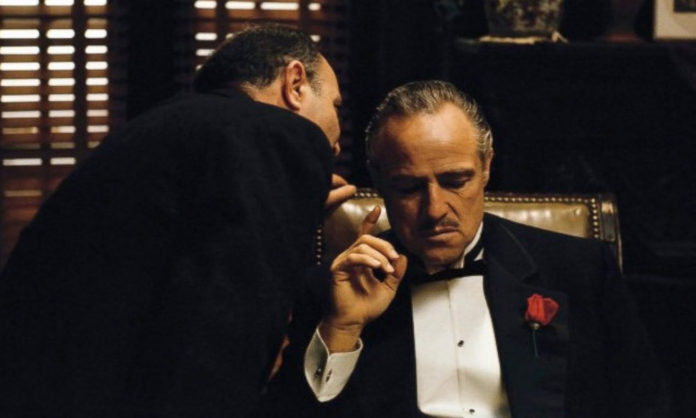In a post on the Killzone blog, James Scott Bell discusses what writers can learn from The Godfather. “The story lessons from this movie could fill a book,” Bell says. “Since this is a blog, I’ll limit myself to a few I find particularly instructive.”
- The Plot. The plot of The Godfather can be summed up in a few sentences. Bell says this is a good trick to master. “My formula for the Elevator Pitch is as follows: (Character name) is a (vocation) who (immediate goal or desire), but when (doorway of no return), (Character) is (main confrontation), and now (Character) must (main objective),” Bell says.
- Argument Against Transformation. Unlike most heroes’ journeys, Michael Corleone descends from decency to evil. Nonetheless, at the beginning of the film, he insists he’ll never become like his family. “This gives the audience an early hook, a hint at what the story is really about,” Bell says.
- Proving the Transformation. “At the end of a film or novel, we must see something that proves the transformation,” Bell says. By the end of The Godfather, Michael has ordered a hit on his sister’s husband and then lies to his wife about his involvement.
- Mirror Moment. In this scene, your protagonist has a gut check, looking at themself in a metaphorical mirror. “This moment is the linchpin between the argument against transformation at the beginning, and proving the transformation at the end,” Bell explains. In The Godfather, this scene occurs right before Michael must follow through on a plan to take violent action against the family’s enemies. “Once he kills a New York police captain, his life will never be the same,” Bell says. “No more honored war hero. No more avoiding ‘the family business.'”
- Orchestrating the Cast. Orchestrating your cast means “giving your characters distinct and contrasting personalities, tags, quirks,” Bell writes. “The more skillfully you do that, the more possibilities for conflict, in scenes and dialogue.” In The Godfather, the three sons of Vito Corleone have significant differences, as do the men who work for Vito, and even the secondary characters.











